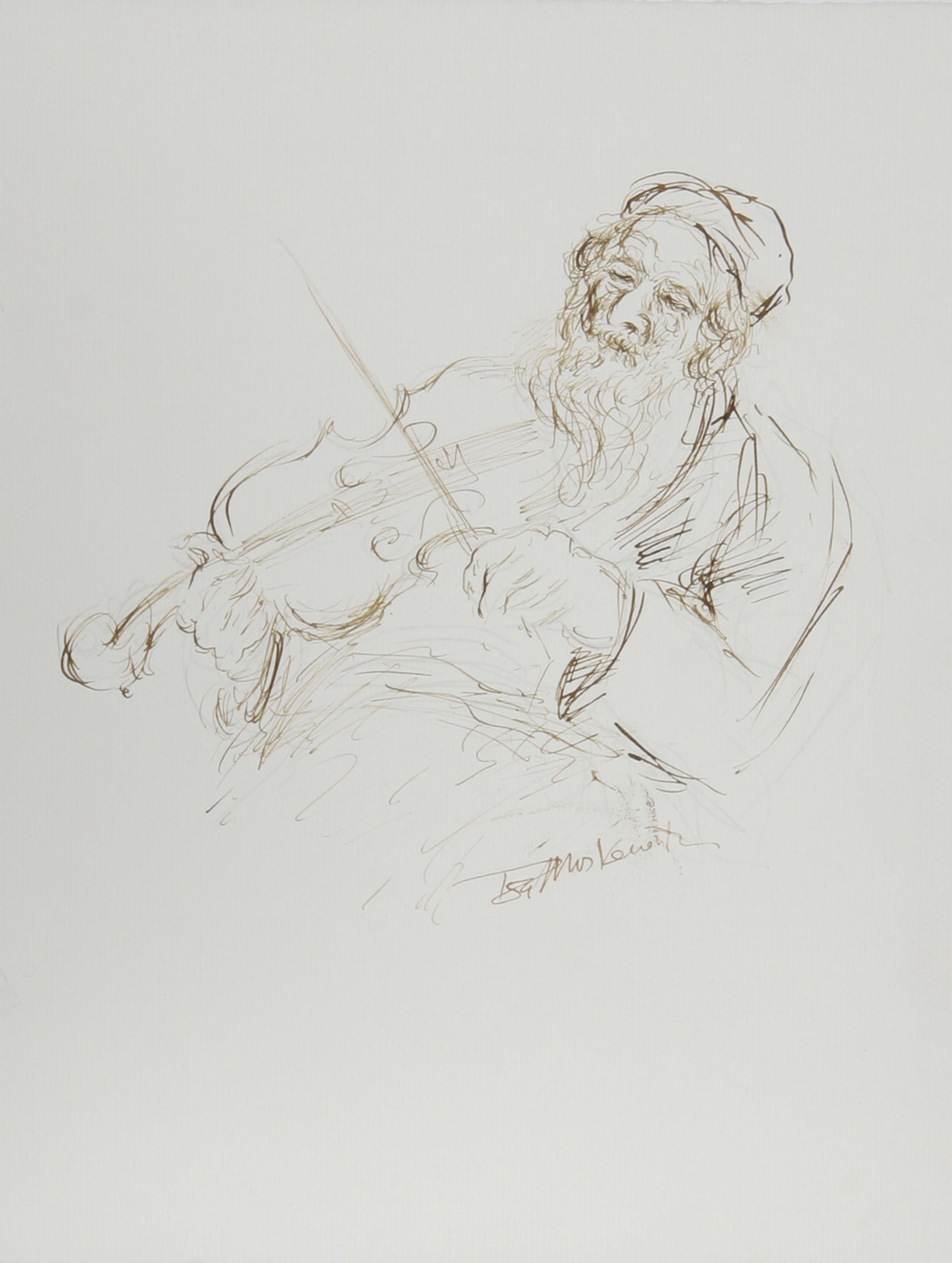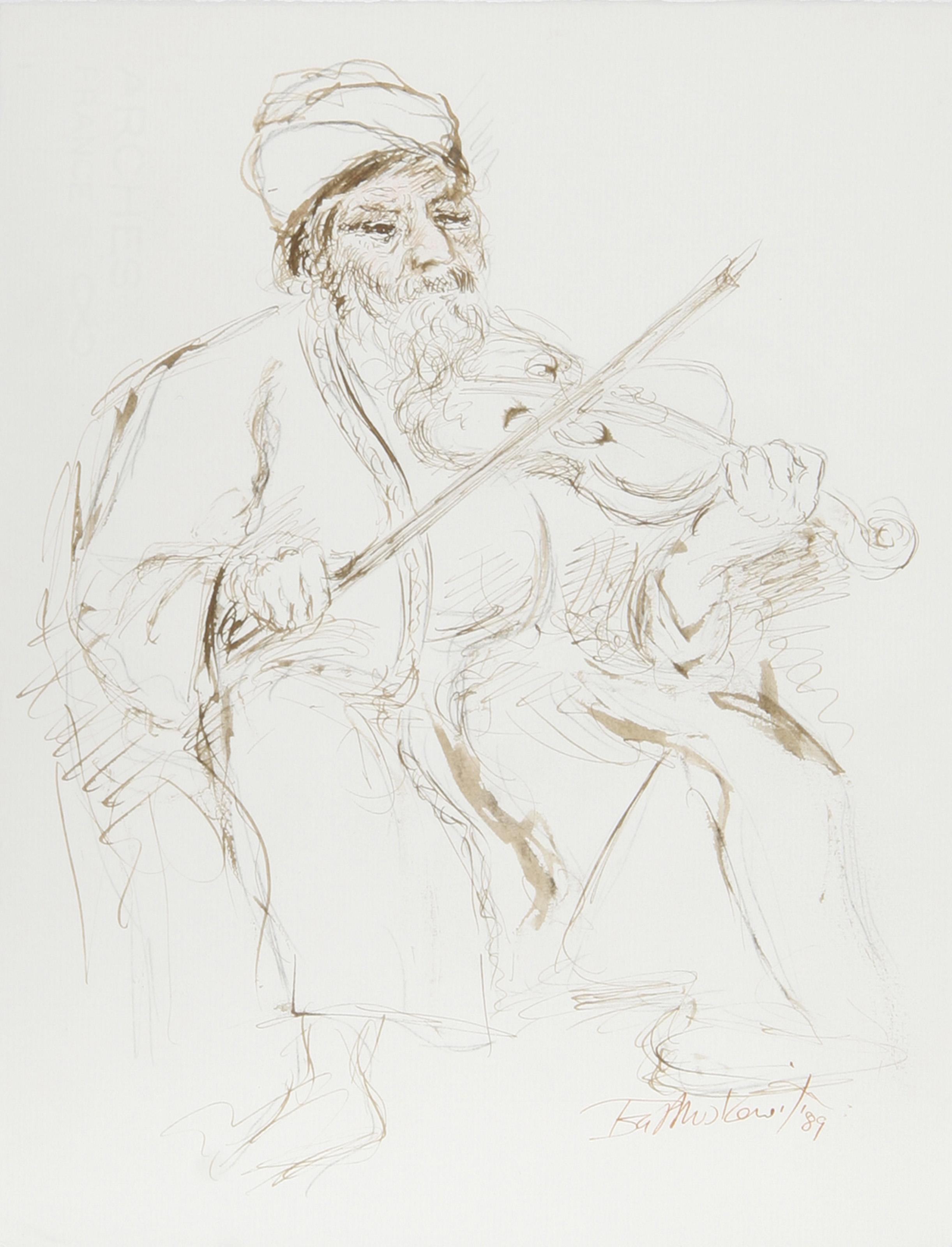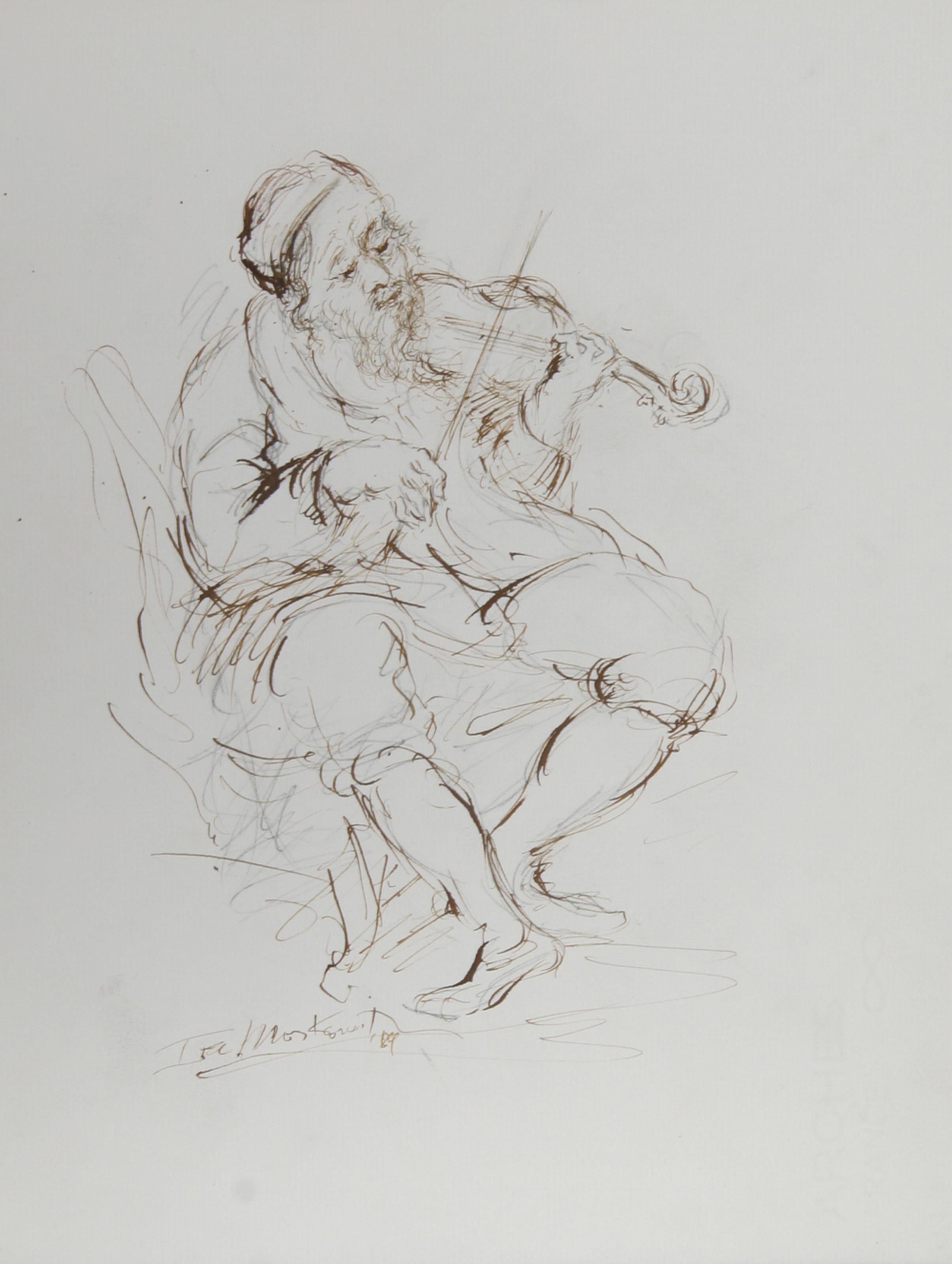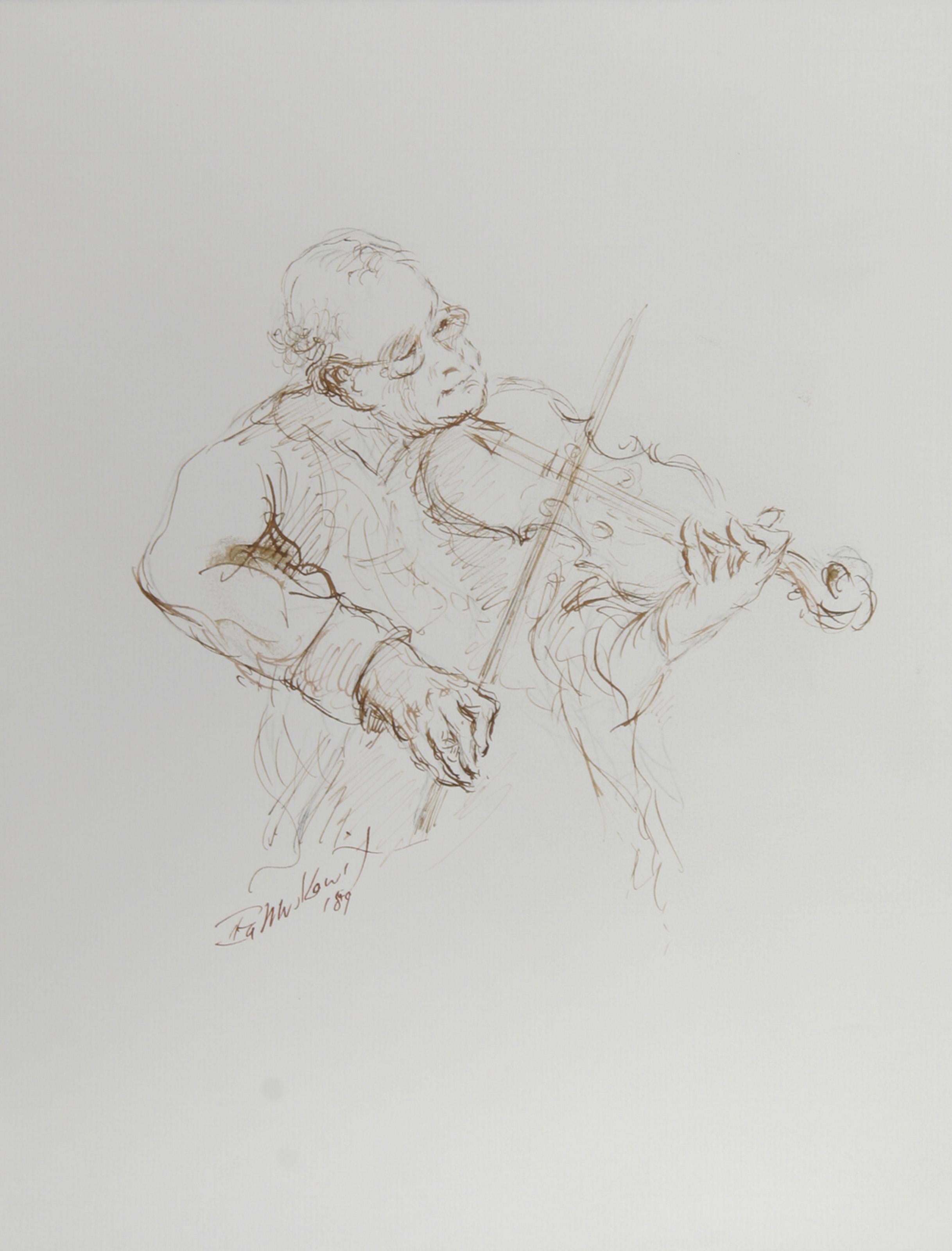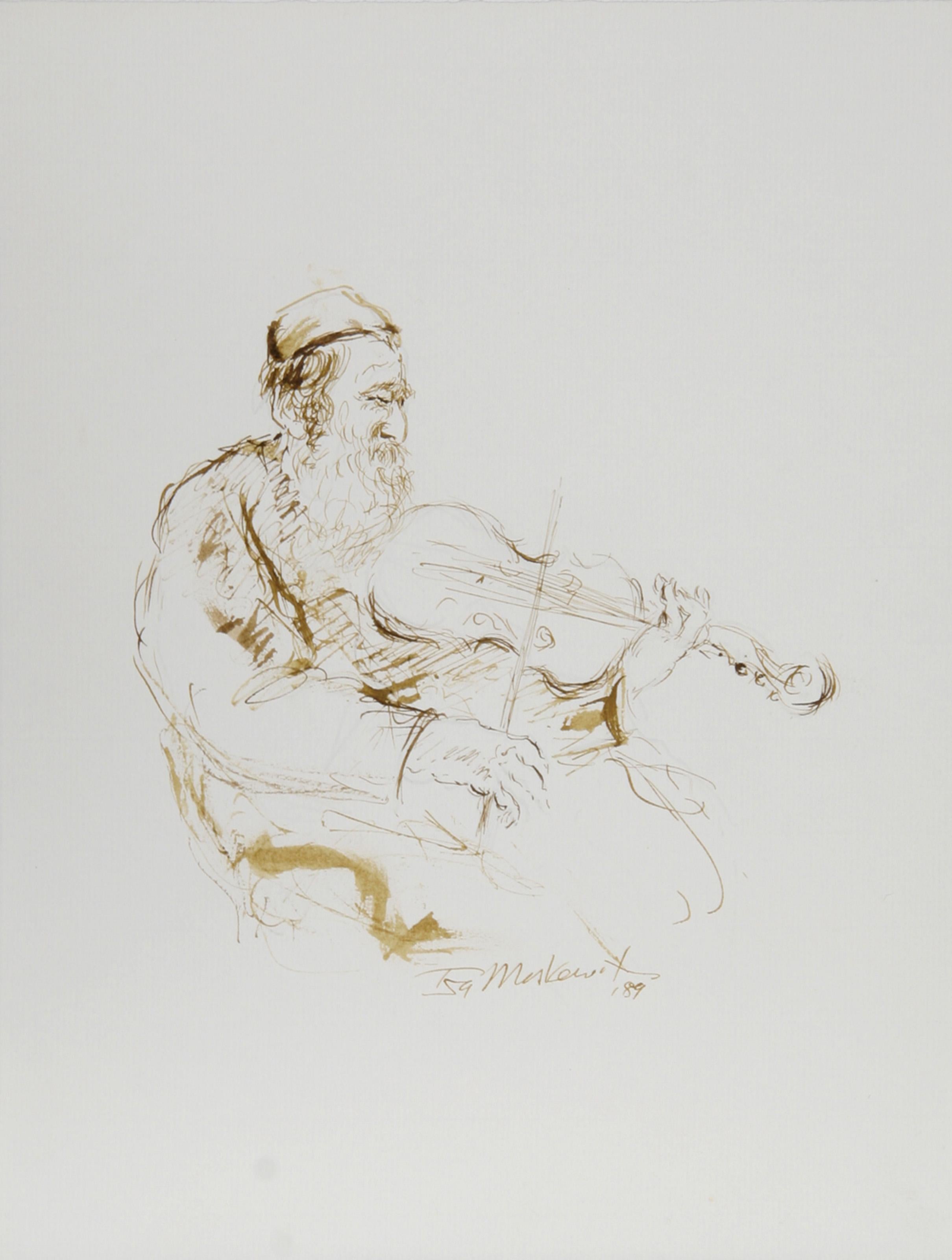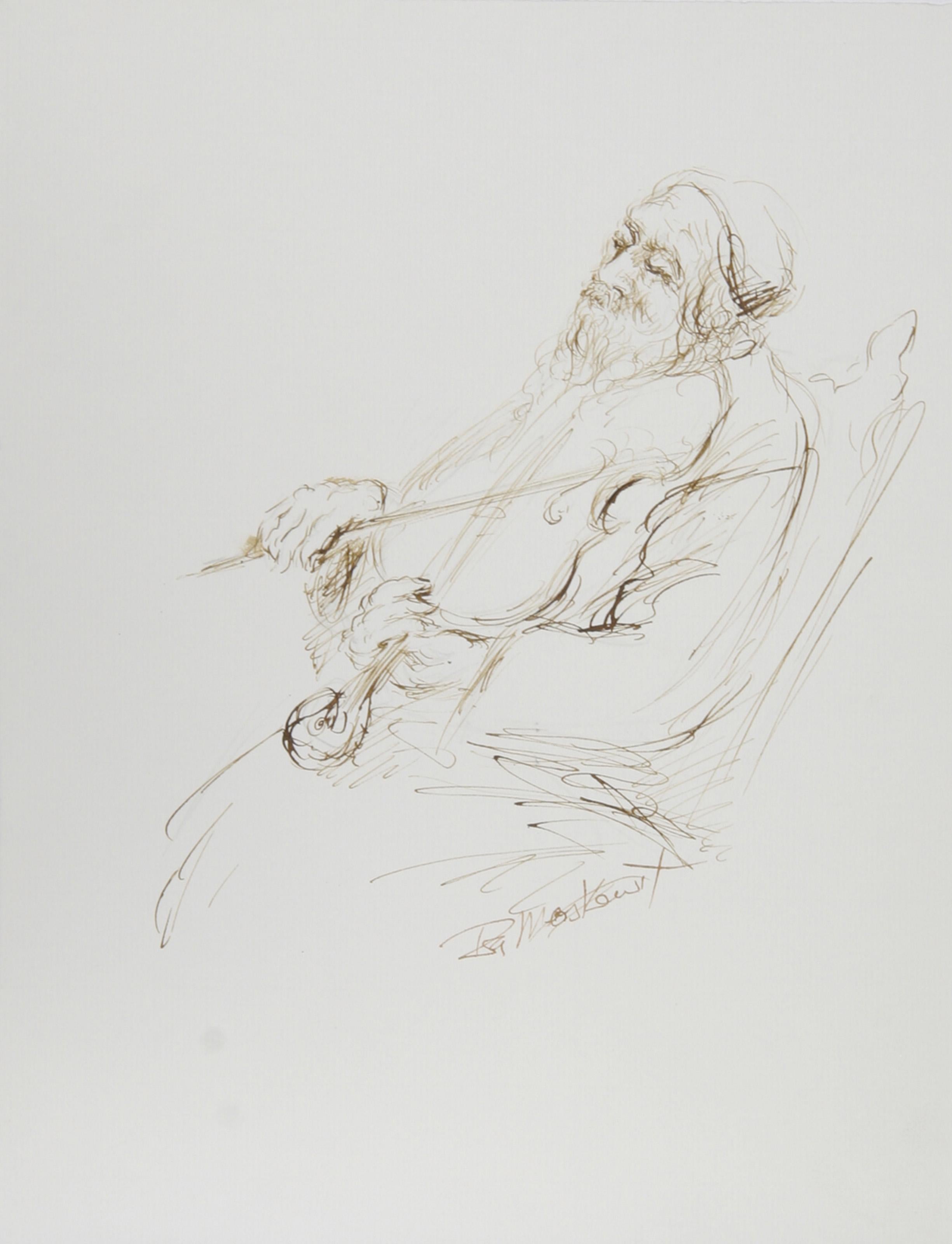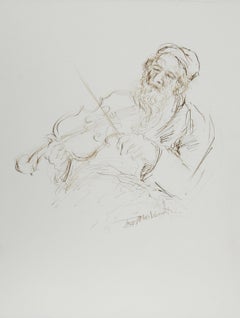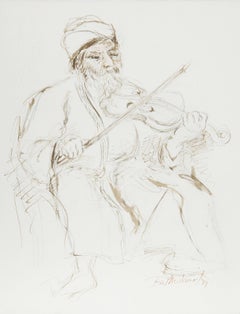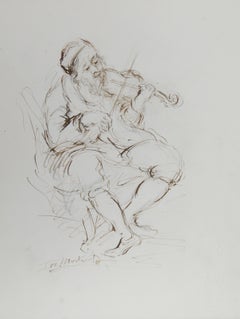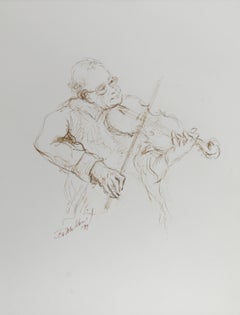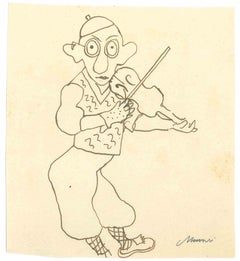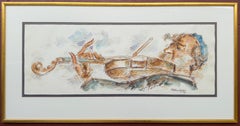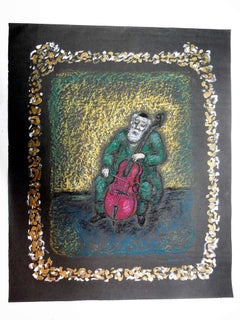Items Similar to Fiddler - II, Folk Art Ink on Paper by Ira Moskowitz
Want more images or videos?
Request additional images or videos from the seller
1 of 6
Ira MoskowitzFiddler - II, Folk Art Ink on Paper by Ira Moskowitzcirca 1989
circa 1989
$350
£267.34
€305.70
CA$497.55
A$545.69
CHF 285.38
MX$6,593.39
NOK 3,580.73
SEK 3,375.28
DKK 2,281.56
About the Item
Ira Moskowitz, Polish/American (1912 - 2001) - Fiddler - II, Year: circa 1989, Medium: Ink on Paper, signed, Size: 13 in. x 10 in. (33.02 cm x 25.4 cm), Description: Looking off to the side, the fiddler in this drawing by Ira Moskowtiz plays his instrument with focus even while his eyes are elsewhere.
- Creator:Ira Moskowitz (1912, American)
- Creation Year:circa 1989
- Dimensions:Height: 13 in (33.02 cm)Width: 10 in (25.4 cm)
- Medium:
- Movement & Style:
- Period:
- Framing:Framing Options Available
- Condition:
- Gallery Location:Long Island City, NY
- Reference Number:Seller: 449721stDibs: LU46615030592
About the Seller
4.9
Platinum Seller
Premium sellers with a 4.7+ rating and 24-hour response times
Established in 1979
1stDibs seller since 2014
3,116 sales on 1stDibs
Typical response time: 1 hour
- ShippingRetrieving quote...Shipping from: Long Island City, NY
- Return Policy
Authenticity Guarantee
In the unlikely event there’s an issue with an item’s authenticity, contact us within 1 year for a full refund. DetailsMoney-Back Guarantee
If your item is not as described, is damaged in transit, or does not arrive, contact us within 7 days for a full refund. Details24-Hour Cancellation
You have a 24-hour grace period in which to reconsider your purchase, with no questions asked.Vetted Professional Sellers
Our world-class sellers must adhere to strict standards for service and quality, maintaining the integrity of our listings.Price-Match Guarantee
If you find that a seller listed the same item for a lower price elsewhere, we’ll match it.Trusted Global Delivery
Our best-in-class carrier network provides specialized shipping options worldwide, including custom delivery.More From This Seller
View AllFiddler - V, Folk Art Ink on Paper by Ira Moskowitz
By Ira Moskowitz
Located in Long Island City, NY
Ira Moskowitz, Polish/American (1912 - 2001) - Fiddler - V, Year: circa 1989, Medium: Ink on Paper, signed, Size: 13 in. x 10 in. (33.02 cm x 25.4 cm), Description: Rendered with a...
Category
1980s Folk Art Portrait Drawings and Watercolors
Materials
Ink
Fiddler - XI, Folk Art Ink on Paper by Ira Moskowitz
By Ira Moskowitz
Located in Long Island City, NY
Ira Moskowitz, Polish/American (1912 - 2001) - Fiddler - XI, Year: circa 1989, Medium: Ink on Paper, signed, Size: 13 in. x 10 in. (33.02 cm x 25.4 cm), Description: Playing music ...
Category
1980s Folk Art Portrait Drawings and Watercolors
Materials
Ink
Fiddler - III, Folk Art Ink on Paper by Ira Moskowitz
By Ira Moskowitz
Located in Long Island City, NY
Ira Moskowitz, Polish/American (1912 - 2001) - Fiddler - III, Year: 1989, Medium: Ink on Paper, signed, Size: 13 in. x 10 in. (33.02 cm x 25.4 cm), Description: Sitting down in an a...
Category
1980s Folk Art Figurative Drawings and Watercolors
Materials
Ink
Fiddler - VII, Folk Art Ink on Paper by Ira Moskowitz
By Ira Moskowitz
Located in Long Island City, NY
Ira Moskowitz, Polish/American (1912 - 2001) - Fiddler - VII, Year: 1989, Medium: Ink on Paper, signed, Size: 13 in. x 10 in. (33.02 cm x 25.4 cm), Description: Holding the instrum...
Category
1980s Folk Art Portrait Drawings and Watercolors
Materials
Ink
Fiddler - I, Modern Ink on Paper by Ira Moskowitz
By Ira Moskowitz
Located in Long Island City, NY
Ira Moskowitz, Polish/American (1912 - 2001) - Fiddler - I, Year: 1989, Medium: Ink on Paper, signed, Size: 13 in. x 10 in. (33.02 cm x 25.4 cm), Description: Sitting down in an arm...
Category
1980s Modern Portrait Drawings and Watercolors
Materials
Ink
Fiddler - VI, Modern Ink on Paper by Ira Moskowitz
By Ira Moskowitz
Located in Long Island City, NY
Ira Moskowitz, Polish/American (1912 - 2001) - Fiddler - VI, Year: circa 1989, Medium: Ink on Paper, signed, Size: 13 in. x 10 in. (33.02 cm x 25.4 cm), Description: Holding the fi...
Category
1980s Modern Figurative Drawings and Watercolors
Materials
Ink
You May Also Like
Violonist - Drawing by Mino Maccari - Mid-20th Century
By Mino Maccari
Located in Roma, IT
Violonist is a china ink drawing realized by Mino Maccari (1924-1989) in the Mid-20th Century.
Hand-signed.
Good conditions with slight foxing.
Mino Maccari (Siena, 1924-Rome, Ju...
Category
Mid-20th Century Modern Figurative Drawings and Watercolors
Materials
Paper, Ink
Violin Player Watercolor
By Chaim Gross
Located in Lake Worth Beach, FL
Violin Player 1960/65
work size 11x29, with frame 18x36 inches, artist signed.
Chaim Gross (1904 Austria–1991 USA) will always be remembered as one of the foremost American artist : ...
Category
1960s Expressionist Figurative Drawings and Watercolors
Materials
Ink, Watercolor, Pen, Archival Paper
Shtetl Klezmer Musician painting and drawing
By Anatoli Lvovich Kaplan
Located in Surfside, FL
Pastel or Tempera on paper. Judaica Shtetl scene of village. This one depicts a Klezmer musician fiddler playing his violin.
Anatoli Lwowitch Kaplan was a Russian painter, sculptor a...
Category
20th Century Modern Figurative Drawings and Watercolors
Materials
Pastel, Tempera
Chaim Gross Judaica Jewish Watercolor Painting Rabbi Klezmer Music WPA Artist
By Chaim Gross
Located in Surfside, FL
Chaim Gross (American, 1904-1991)
Watercolor with pencil painting
Rabbi Klezmer music concert, flute player.
Hand signed
framed: 15 X 28.5, paper: 9.5 X 23
Chaim Gross (March 17...
Category
Mid-20th Century American Modern Figurative Drawings and Watercolors
Materials
Paper, Watercolor
Modern British ink pen on paper work of Isaac Stern by Edmond Xavier Kapp
Located in Petworth, West Sussex
Edmond Xavier Kapp (British, 1890 – 1978)
Isaac Stern at work
Inkpen
Signed, inscribed and dated ‘Isaac Stern at work Kapp 51’ (lower right)
17.1/8 x 13.7/8 in. (43.3 x 35.3 cm.)
Edmond Kapp was born in Islington, London, on 5 November 1890, of American and German Jewish parentage. He gave himself the middle initial ‘X’ – sometimes said to stand for Xavier – to distinguish himself from his father Emil Kapp, who was a wine merchant. However, his parents called him ‘Eddie’ while his wife and friends knew him as ‘Peter’.
During his early years, Kapp was continually ill and, while convalescing, entertained himself by drawing at home. As his health improved, he attended Dame Alice Owen’s School, Islington (1903-10), with periods at Berlin University (1909) and L’Institut Français pour les Etrangers, Paris (1909). He then read Languages at Christ’s College, Cambridge (1910-13), though spent most of his time writing and drawing.
Kapp took a studio in London, and worked intensively until the outbreak of the First World War, contributing to the Daily News, the Onlooker and other periodicals. During the war, he served as a 2nd Lieutenant in the Royal Sussex Regiment on the Western Front, and then in Intelligence, rising to the position of Staff Captain on Haig’s Staff. Finally, he founded and directed the Neutral Press Counter-propaganda Section.
In 1919, Kapp returned to London and, after abortive periods at three art schools, worked alone. In that year, he made his name with an exhibition of caricatures, held at Furst’s Gallery, London, and accompanied by a catalogue introduced by Max Beerbohm. This soon led to contracts with three London periodicals and a book of caricatures, Personalities, published by Martin Secker. Through the 1920s and 30s, his drawings of musicians and other personalities appeared in a wide variety of periodicals, most notably Time & Tide; were collected in further volumes; and were exhibited at the Leicester Galleries. He considered himself to be a ‘character-portraitist’, producing images of psychological not satirical power, and disliking the term ‘caricature’.
Between the wars, Kapp developed other aspects of his artistic talents, the desire to study and the search for subject matter often taking him abroad. For instance, work at the British Academy, Rome, under Antonio Sciortino...
Category
20th Century Modern Still-life Drawings and Watercolors
Materials
Paper, Ink
Shtetl Musician (Klezmer Playing the Violin, Sholem Aleichem)
By Gershon Knispel
Located in Surfside, FL
Shtetl Klezmer Violinist
GERSHON KNISPEL
Cologne, Germany (Haifa, Israel - Sao Paulo, Brazil), b. 1932
Gershon Knispel was born in Cologne, Germany in 1932. Within a year of his bir...
Category
20th Century Modern Figurative Prints
Materials
Lithograph
More Ways To Browse
Nude Pinup
Nude Woman Sketch
Seated Nude By Victor Di Gesu
John S Barrington
Nude Charcoal Sketch
Paul Chalk
Nude Drawings Gold Framed
1970s Art Female Nude
Hiroshi Hayakawa
Lost Nude
Naked Man Painting
Nude Geisha
Unknown Drawing Erotic
Nude Penis
Leon Collard
Nude Texas Artist
Male Nude Chalk Drawings
Male Nude Old Masters
